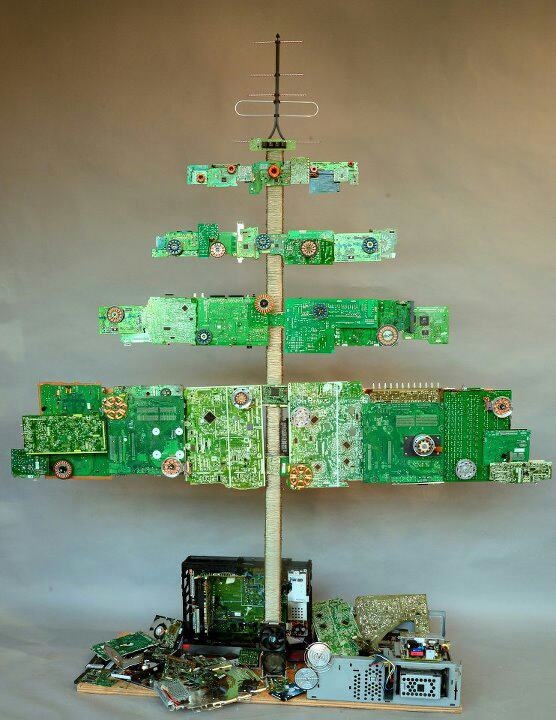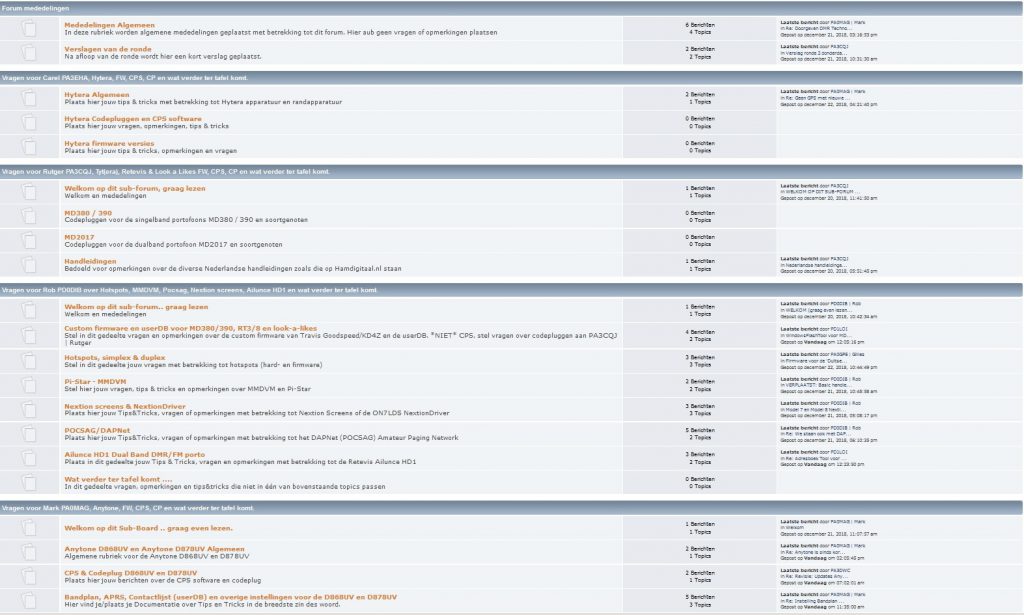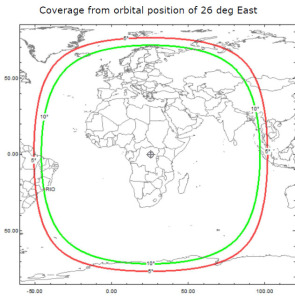
HamDigitaal wenst u fijne feestdagen!


De sinds begin december 2018 opgerichte DMR Techno ronde welk elke donderdag avond op TalkGroup 2045 om 20:00 CET op het BrandMeister netwerk gehouden word heeft nu een eigen forum.
op het forum valt te lezen:
Dit forum is bedoeld ter ondersteuning van de Technoronde, die elke week op TG2045 op de donderdag om 20:00 uur (Lokale tijd) wordt gehouden.
We proberen hier antwoorden en uitleg te geven aan specifieke onderwerpen die tijdens de ronde aan bod komen en daar niet ‘in depth’ behandeld kunnen worden.
Het is een forum van en door deelnemers, waarbij we zoveel mogelijk interactie tussen alle deelnemers stimuleren.
Veel plezier namens het ‘kernteam’,
PA0MAG (Mark), PA3EHA (Carel), PA3CQJ (Rutger) en PD0DIB (Rob)

Bron: destevez.net
A couple days ago, Janos Tolgyesi HG5APZ asked me by email about different hardware setups to receive the Amateur radio transponders on Es’hail 2, with an interest on inexpensive but effective solutions. He was quite happy with my detailed reply and convinced me to turn it into a blog post, so that other people can learn from it.
This post is intended for people that do not know much about Es’hail 2 but are interested in receiving it. If you’ve been investigating about the different setups that people are doing to receive it, then probably you’ll not learn anything new here. The post addresses questions such as “do I need a modified LNB” and similar.
The coverage of the Amateur radio transponders is anywhere where the satellite can be seen above the sky, since the transponders use a global beam. A geostationary satellite sees about a third of the Earth surface. In the case of Es’hail 2 this covers longitudes from Eastern Brazil to Thailand. In the figure below you can see the coverage. The green and red lines indicate the points on the Earth where the satellite is seen at 10 and 5 degrees of elevation respectively.

Es’hail 2 can be received with as little as a dish and Ku-band LNB intended for satellite TV, and an RTLSDR or other cheap SDR. You also need some way of supplying voltage to the Ku-band LNB through the coax cable. This can be done with a bias-tee. There are some very cheap models around or you can easily build your own. Another possibility is to use a DVB-S receiver to supply the voltage. In this case you’ll also need a splitter/combiner and DC-block (very cheap if you buy the ones intended for satellite TV). An advantage of using a DVB-S receiver is that you can control the receive polarization from the DVB-S receiver (more on this later).
Regarding the dish, you don’t need anything very large. The link budget estimates seem to indicate that something around 60cm will be enough unless you are near the edge of the coverage area. My dish is a 95cm offset dish. I bought 95cm because larger sizes start to be increasingly more expensive (there is some kind of price break). If you can afford the space, I suggest you do the same thing and buy the largest dish just below the price break.
For the LNB, you should get a PLL-based model. Do not get a DRO-based one under any circumstances. The frequency stability of a PLL LNBs is much better and DRO LNBs cannot be modified to use an external reference. There is a large collection of LNB teardowns by F4DAVwhere you can see if your model of choice is any good.
You should know the following about LNBs. The most popular type of Ku-band LNB is the universal or “Astra-type” LNB. This is the one you should get. It can receive on vertical or horizontal polarization, and the local oscillator can be set to either 9750MHz or 10600MHz. The polarization is controlled by the DC voltage you feed through the coax cable (either 13V or 18V). The local oscillator is set to 10600MHz by feeding a 22kHz tone through the coax. If the tone is not present, the local oscillator will be 9750MHz. There is a nice table on Wikipedia which sums these features up.
Now, for Es’hail 2, unless you have absolutely no interest in one of the transponders, you’ll need both the vertical and horizontal polarizations, since the narrowband transponder uses vertical polarization and the wideband transponder uses horizontal. Therefore, you should have a way of toggling the DC voltage you feed to the LNB. As mentioned above, a DVB-S receiver can do this for you (by means of menu options), but it is cumbersome if you want to remotely control or automate this toggle.
Under normal circumstances, the 9750MHz local oscillator is designed to receive 10.7 to 11.7 GHz and the 10600MHz local oscillator is designed to receive from 11.7 to 12.75 GHz. The Es’hail 2 Amateur transponders are at 10.5GHz. Most LNBs can be used to receive well below 10.7GHz with a 9750MHz local oscillator, so for Es’hail 2 you’ll always use the 9750MHz local oscillator. You only need the 10600MHz local oscillator if you also want to receive other Ku-band services which are at higher frequencies or if you want to play with feeding different reference frequencies, as I’ll explain below. This is convenient, because to get the 9750MHz local oscillator you don’t need to do anything special. If you need the 10600MHz local oscillator, you need some way of inserting the 22kHz tone. Probably the simplest way to do this is with a DVB-S receiver, but you may also design a small circuit to do so.
Speaking of IF frequencies, a 9750MHz local oscillator places 10.5GHz at 750MHz, so you’ll need to use a receiver that can tune to that frequency. These days, most SDRs can. If you want to use a conventional Amateur radio receiver that perhaps only has the 70cm band, then you could use a frequency conversion circuit (a simple mixer) or feed a different external frequency so that the IF ends up in the 70cm band. I strongly suggest you use an SDR which can tune to 750MHz, so that the default IF is not a problem.
If you also want to use a DVB-S receiver for the DVB-S signals in the wideband transponder, then the default IF can be problematic, as most commercial DVB-S set-top-boxes do not tune this low in frequency. Again, you can do frequency conversion or feed a different reference, but there are DVB-S receivers that have a wider tuning range, such as the popular Minitiouner. I suggest you use one of these to simplify the setup.
Also, if you are interested in DVB-S, note that there is leandvb, which is a software DVB-S demodulator. Thus, in certain cases you may use your PC and do without the DVB-S receiver, depending on your PC’s performance, the particular signal you want to receive, etc.
The last topic about the LNB is frequency stability. The stability of a commercial satellite TV LNB is good for receiving wideband signals, such as DVB-S (after all, this is what it is sold for), but not enough for narrowband signals. Depending on your intended use, you might want to improve the stability of the LNB. If you’re only interested in the DVB-S signals and other wideband signals in the wideband transponder, then probably it is not necessary to improve the stability. If you want to receive the signals from the narrowband transponder, then you need to do something.
There are essentially two kind of solutions that can be done. The first involves modifying the LNB to feed it an external reference which is more stable than the integrated crystal oscillator in the LNB. The second involves using the beacons in the narrowband transponder to compensate for the LNB drift. This solution involves only software. It hasn’t been developed or tested yet, since the beacons are not transmitting yet, but there are some people thinking seriously about it, and there is no reason why this approach shouldn’t work well.
In any case, I think that modifying the LNB to feed an external reference is a simple and interesting project, so I recommend that you do it. Depending on your LNB model, you can find instructions online from other Amateurs about how to modify it. In any case, this involves feeding an external signal via capacitive coupling to one of the crystal pins (either removing the crystal or leaving it in place). Good starting points for reading are the documents by G4JNT, F1CHF, and EA5DOM.
Once you have modified your LNB, another question is where to get a stable reference of the appropriate frequency. Most LNBs use either a 27MHz or 25MHz crystal, so that is the frequency you should feed. One possibility that I’ve tested is to use a OCXO/Si5351A kit from QRPlabs. This gives you a stable reference, but I prefer to have my reference locked to GPS to perform very precise Doppler measurements.
In my station I am using a DF9NP 10MHz GPSDOtogether with a DF9NP 27MHz PLL. Another very interesting possibility is the Mini GPSDO from Leo Bodnar, which can generate any frequency from 400Hz to 810MHz. It is not very expensive and it can be very useful for many other projects. This product didn’t exist when I got the hardware from DF9NP, but if I was buying today, I would be very tempted to get it.
Finally, as I’ve mentioned above, you can vary the reference frequency that you feed in to the LNB to get a different local oscillator frequency. This can be used to move the IF, for instance to 432MHz, where you can use a conventional 70cm receiver, or to the L-band, where you can use a DVB-S set-top box. Depending on your particular LNB, the lock range of the PLL will vary, so you will need to check what other people have achieved or try it out yourself.
Bron: rrmediagroup
Hytera America made available a firmware update that upgrades legacy products to the capabilities of the company’s new i-Series products. The firmware update was released in response to the U.S. International Trade Commission’s (ITC) decision to implement limited exclusion orders (LEO) and cease-and-desist orders (CDO) against Hytera Communications and its Hytera America

In November, the ITC released a final determination in the patent infringement lawsuit Motorola Solutions brought against Hytera and its subsidiaries. That determination affirmed an administrative law judge’s (ALJ) earlier finding that Hytera infringed multiple Motorola patents. As part of the final determination, the ITC put the LEO and CDO in place to prevent Hytera from importing, selling or distributing Digital Mobile Radio (DMR) products that infringe Motorola patents.
However, that final determination also reversed the ALJ’s earlier finding that redesigned products Hytera submitted — the new i-Series — infringed Motorola’s patents. Therefore, Hytera and its subsidiaries can import, sell and distribute those products in the U.S.
“We believe the final ruling is very positive to our customers and dealers because it takes them out of the shadow of this lawsuit and gives them a way forward,” said Steve Cragg, vice president of sales, Hytera America.
The firmware update that upgrades legacy radios to i-Series capabilities can be accessed through Hytera’s dealer portal where it makes all of its software updates available. There is no charge for the software update.
New capabilities for the i-Series include over-the-air programming (OTAP) and optimized push to talk (PTT), as well as new features that enhance coverage and channel efficiency, according to material provided by Hytera.
Once updated with the new firmware, the legacy radios will support most capabilities of the i-Series radios, Cragg said. The i-Series includes a mobile that supports full-duplex capabilities. Because that duplex operation is based on a new hardware platform, the firmware update does not provide that capability, and customers interested in that capability will need to purchase the new radio.
When the ITC requested public interest statements on the proposed sanctions prior to the final determination, Hytera and several dealers and customers asked for a repair exception that would allow Hytera to provide new components and radios for existing systems.
The ITC did not address that request in its final determination. Cragg said Hytera originally asked for that exception so it could provide clarity to its dealers and customers once the ITC released its final determination.
However, the exception is not necessary with the ITC’s approval of the i-Series because those products can slot into existing systems and keep the system functioning, Cragg said. “We’re confident that we can continue to fully service and support our customers with the i-Series.”
The i-Series products are compatible with legacy products, so a user does not need to update the system to swap in i-Series products, Cragg said. However, to use the i-Series’ new capabilities, the system’s firmware must be updated.
Interest in the i-Series has so far been strong, Cragg said. Webinars on the new product line the company held following the decision reached capacity, and additional webinars have continued to attract large numbers of attendees.
“We have more questions about the new features than on how to upgrade the radios, so I think it shows the market is generally interested,” Cragg said.
As part of the ITC’s process, the case is in a 60-day presidential review period where President Donald Trump, or a representative, can disapprove the ITC’s final determination. During that period, Hytera can continue to sell the infringing products if it posts a bond.
However, Hytera ceased sale of its legacy products following the final determination’s release and plans to sell only the new i-Series products moving forward, Cragg said.
Hytera released the i-Series products earlier this year around the rest of the world, but Hytera held off on releasing them in the U.S. while the ITC case was ongoing.
“We see no reason why we would continue to sell the legacy products when we have fully equivalent products with more and better features,” he said.
Hytera still has the option of appealing the ITC’s decision to the U.S. Court of Appeals. The company has not disclosed whether it plans to appeal, and Cragg declined to comment on potential next steps.